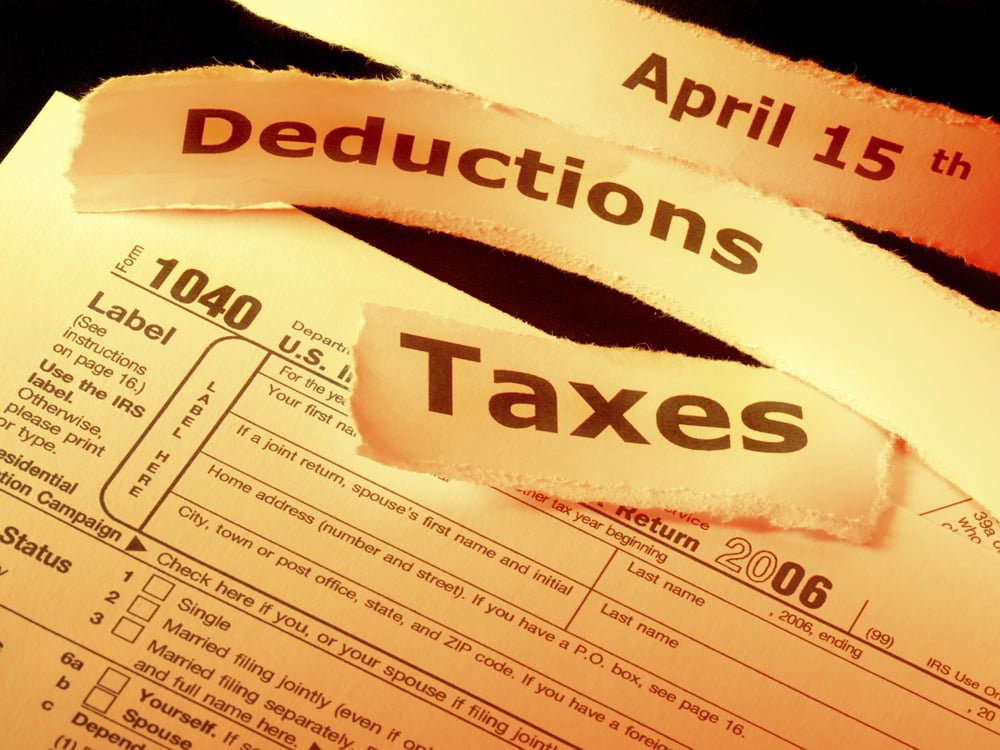4 Tax Deductions to Take Right Now Before They Disappear for Good
3/08/2018
As you’ve no doubt heard, the U.S. tax code got an overhaul—so what does that mean for the 2017 return you’re filing right about now? It means that this is your last chance to take advantage of tax deductions from the old tax code. Yikes!
So, if you aren’t sure if you’ve milked every last drop of tax break goodness out of your returns, it’s time to squeeze, hard.
To help you out, here’s a rundown of four major tax breaks that are disappearing after this filing year, and how to take full advantage of them before they go bye-bye.

1. Home office
With the increasing popularity of telecommuting and working from home, the home office tax deduction is one that many people opt to take. If you’re full-time self-employed, this deduction will continue in 2018. But for all you office workers who work in your “home office” on the occasional Friday? The gig is up.
“In 2018, for non-self-employed people, the home office deduction is going away entirely,” says Eric Bronnenkant, CPA, CFP, and Betterment’s head of tax.
So if you’re a W-2 employee, start saying your tearful goodbyes to your home office deduction—but not after you’ve had one last hurrah filing your 2017 return. The home office deduction falls under what’s called “miscellaneous deductions,” and includes business expenses that are not reimbursed by your employer. Miscellaneous deductions can’t exceed 2% of your adjusted gross income, but if you meet the requirements, you can take the deduction in 2017.
Here’s more info on how to take a home office tax deduction.
2. Unlimited property tax
One of the biggest changes for homeowners in the new tax bill is the cap on deducting property taxes.
“Before, regardless of the amount, all property taxes were tax-deductible,” explains Bronnenkant. Yet going forward in 2018, “the maximum you can deduct is $10,000, and that includes state and local income tax, property tax, and sales tax.”
That means if you pay more than $10,000 a year between your state and local income taxes, property tax, and sales tax, anything exceeding that amount is no longer deductible—which is all the more reason to rake it in right now. For your 2017 return, make sure every penny you pay in property taxes is deducted, along with your state and local taxes—or, if you’re in a state without income tax, a portion of the sales tax you paid.
3. Moving expenses
If you moved in 2017, lucky you: You’re the last to take advantage of the ability to deduct your moving expenses, provided your move meets certain requirements (e.g., your new job is at least 50 miles farther away than your old job was from your old home).
“Previously, people could deduct all the expenses associated with [relocation] moving,” says Priya Mishra, the managing attorney at Top Tax Defenders. “This will now be gone.”
The only exception going forward, according Patrick Leddy, a tax partner at Farmand, Farmand, and Farmand LLP, will be members of the armed forces. So if work took you to a new locale last year, don’t forget to dig up your receipts and deduct those moving expenses.
Here’s more info on how to make the most of your moving expenses deduction.
4. Interest on a home equity loan for non-home improvement purposes
A home equity loan is money you borrow using your home as collateral. This “second mortgage” (because it’s in addition to your original home loan) often takes the form of a home equity loan or home equity line of credit (HELOC). Traditionally, the interest on these loans could be deducted up to $100,000 for married joint filers and $50,000 for individuals. The best part? You could use that money to pay for anything—college tuition, a wedding, you name it.
But starting in 2018, home equity loan interest is deductible only if it’s used for one purpose: to “buy, build, or improve” your home, according to the IRS. So if you’re dying to update your kitchen or add a half-bath, you’ll get a tax break from Uncle Sam. But if you want to tap your home equity to go to grad school, well, that’s on you.
More bad news: Unlike the mortgage interest deduction where loans taken before 2018 could be grandfathered into the old laws, old home equity loans have no such exemption. People with existing HELOC debt take the hit just like homeowners applying for one now.
But there is one small loophole: To reclaim this deduction, you could refinance your second mortgage and your first into a new mortgage that lumps together both debts. This essentially turns your HELOC into a regular mortgage, which means that you can deduct that interest. Just remember that refinancing can be costly, and that this new loan will be subject to the new, smaller limits on deducting mortgage interest. In loans originating on or before Dec. 14, 2017, that limit is $1 million. On loans made after that point, the cap is $750,000.
Will I owe more taxes next year?
Worried about losing all of these deductions? Don’t freak out!
Though the new tax plan is drastically changing how most people will file their taxes, it doesn’t necessarily mean that you will end up owing more. Limits on mortgage interest deductions may be dropping, but so are the tax rates for most income groups. While the amount of property tax you can deduct is shrinking, the standard deduction is growing. So, it may all balance out. Maybe.
The most important thing to do, after making sure you’ve grabbed all of the tax deductions you can for 2017, is to sit down and size up where the new tax laws leave you.
“You’ll want to run a tax projection and see what the impact is,” says Bronnenkant. That will give you plenty of time to prepare so you’re sitting pretty once you file next year.
For more smart financial news and advice, head over to MarketWatch.









